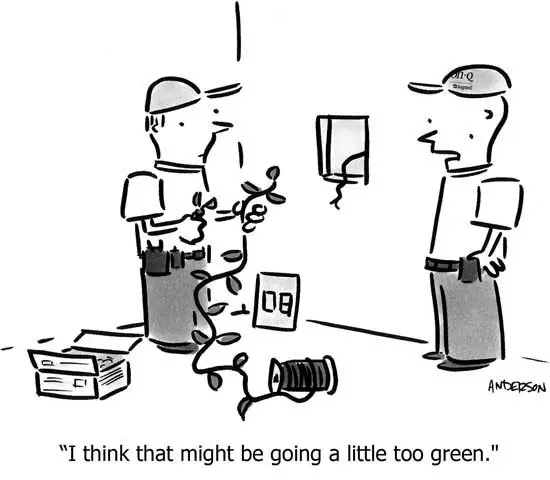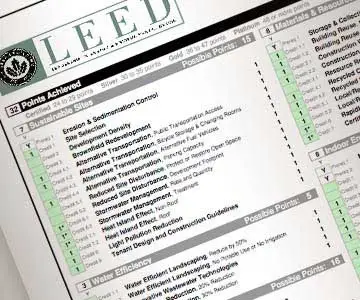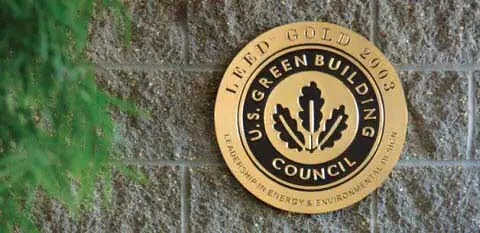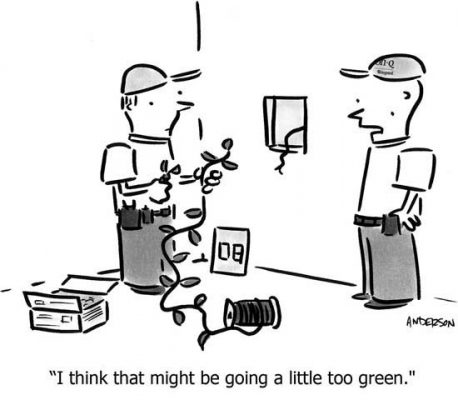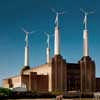LEED System, Green Architecture Article, Eco Building Design, Sustainable Property
LEED Credit System : Architectural Discussion
Architecture Discussion by Romi Sebastian, Architect & Environmental Designer, Doha
12 Aug 2010
World needs to go Green, then Green needs to go LEED
Article by by Romi Sebastian
Green Architecture
In the past decade, the idea of building ‘green’ has sprouted globally. Gradually it has turned into one of those temporary trends set up to support marketing of related fields of construction activity. Today, the term ‘green’ is certainly abused and misunderstood by most of the engineering empire.
All planetary living systems are the only designs we know of that are triumphant in their sustainability because they relate with the environment in holistic and reductive processes. On the contrary, many of the current green building rating systems like LEED are structured to endorse solutions that are in majority additive and encourage consumption over conservation. This is simply because the rating systems are initially conceived to have set of sections for sustainability; that are then packed with technologies and products to achieve it. Architects now depend much on these intelligent service systems to make up for their neglect in basic building design.
It is unfortunate that rating systems such as LEED have converted Architecture into an accounting exercise. This has completely digressed from what could have been a healthy exercise in coming out with good architecture. We are allowing these statistical procedures to dominate our logical thinking and creativity. The potential benefits of solely achieving a certification should not be the motive of the design process.
Why are a majority of the LEED credits weighted equally, when it is clear that some points have more environmental benefits than others? ‘Although installing the efficient HVAC system would amount to saving a huge amount of energy and add environmental value on a massive scale, according to the rating system – it still equals the idea of having bicycle racks within a campus’, said an Architect. In my view, the solution here is to make a careful study of all the critical credits that add superior environmental value and make them mandatory. Then, the playing of points can be done by professionals within the feeble credits.
LEED Credit System Explained
It is a fact that the development of Green/Sustainable buildings will initially cost more than a conventional building. We also have to add costs associated with procedures for LEED certification. I wonder why consultants break their heads making up fake reports and statistics to show clients otherwise. The hidden costs will show up as the project marches towards completion and will cause clients havoc. Let us be brave enough to acknowledge that they cost more and are definitely worth it.
Somewhere along the line, organizations such as USGBC have realized it could profit of the LEED system. It has undoubtedly advertised LEED globally, when compared to other rating systems like Greenstar (AUST) & BREEAM (U.K). The USGBC charges high fees for commissioning and for becoming a LEED Accredited Professional. In my opinion, if the organization is really concerned about the environment and making buildings globally green, they should make it affordable.
Additionally, LEED AP is being converted into an ‘elite’ profession – gradually threatening the significance of trained professionals in the architectural and engineering green arena. I am forced to question the significance of paying for and passing this test; as all LEED APs – go back to referring the handbooks again, while commissioning all aspects of a project. So why have this costly and superfluous testing system in the first place? Orientation and training would more than suffice in this regard.
Instead of this technocratic certification, the procedures should be more involving and subjective. Points should be granted for innovative approaches that are not included in the LEED handbook. USGBC professionals I suppose, are trained enough to make such judgments and subjective decisions proficiently. The handbook should be treated only as a useful guide and a rating manual.
Instead of LEED APs judging buildings solely through paper and e-media submissions – regular visits to analyze project sites, inspections of materials/products should be conducted. Clients and consultants spend a lot of money and effort for LEED purposes and analyzing a project through mere paperwork, does not justify the whole system at all. Decisions can be made on project sites through discussions with clients, consultants and contractors collectively. This is how innovative and fresh LEED can evolve itself to be; rather than being a mundane system of compiled data on which buildings are rated on.
Handbook for rating systems are not to be used as the encyclopedias for Green and Sustainable designing. Architects and Engineers must possess prior knowledge on analyzing climatic data and geography, human comfort, passive design techniques, careful use of materials/resources and efficient building services. These basic principles should drive our design process. Useful rating systems such as LEED, BREEAM, can serve as a check list to our evolving design concepts.
The world needs green buildings a lot more than green buildings need LEED, BREEAM certification. If certifications continue to cost too much money, time and effort – we will not stop building green projects; we will just stop certifying them.
Article by Romi Sebastian, Architect & Environmental Designer, Doha
Please note, our architecture sites have provided a forum for 11 years. We may or may not agree with points made in articles on our sites. We have expressed our views precisely over the last 11 years via editorials (in the early days online weekly), we do not involve ourselves with individual articles. Currently editorials are issued weekly via the newsletter.
Do you have a view on the points re the LEED Credit System raised by Romi Sebastian? If so, please e-mail info(at)e-architect.com
International Architectural Designs
Ecocities, London
Sustainable Design : article by Trevor Tucker. 15 Sep 2009
Biomass : discussion by Alastair Kerr, Director General. 29 Mar 2010
Globalisation Architecture : article by Trevor Tucker. 8 Jun 2010
Sustainable Building Design : article by Trevor Tucker. 18 Aug 2009
Nature Architecture : article by Trevor Tucker. 15 Sep 2009
Sustainable Buildings : article by Adrian Welch. 12 Sep 2006
Comments / photos for the LEED Credit System: Green Design Debate page welcome

